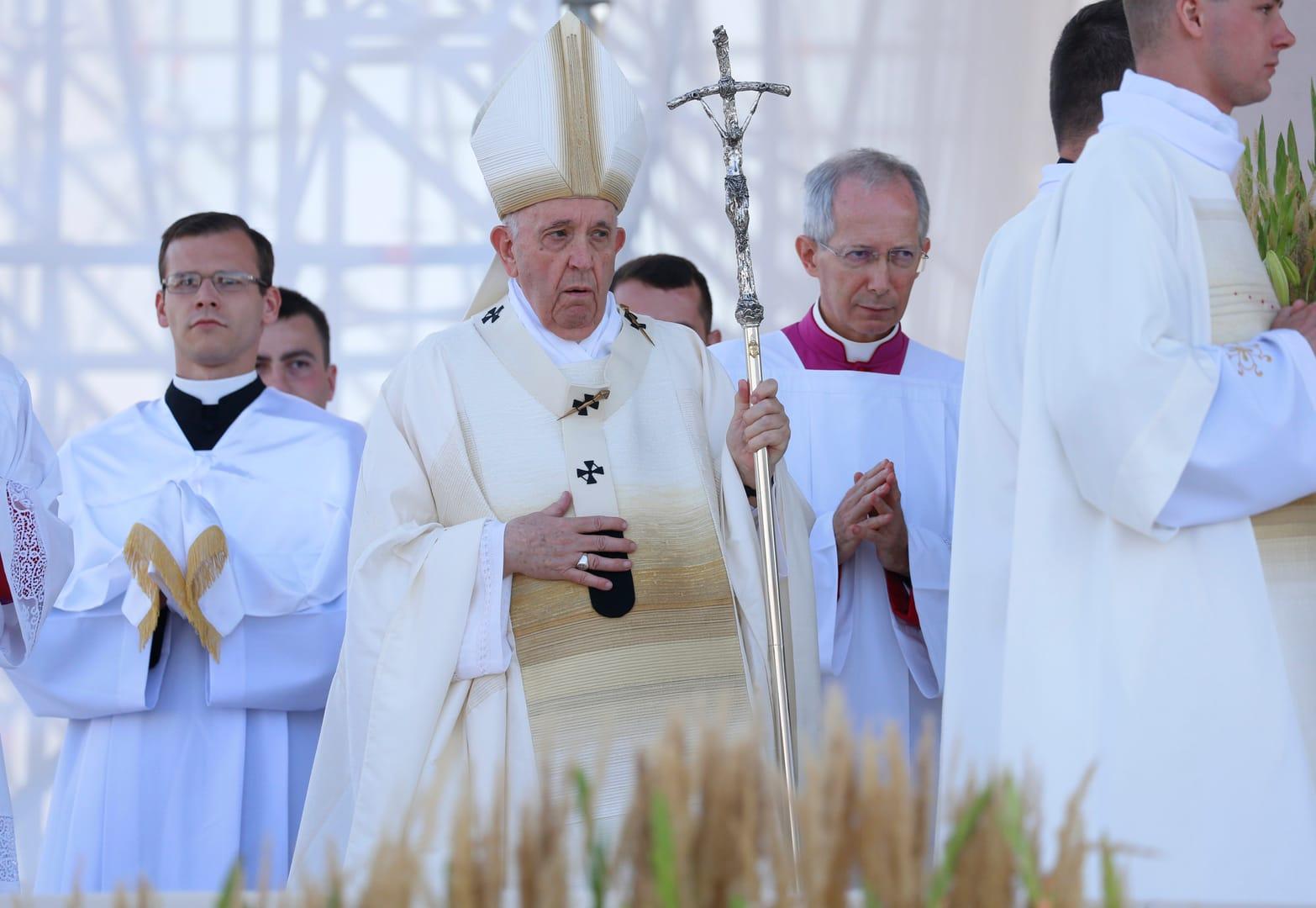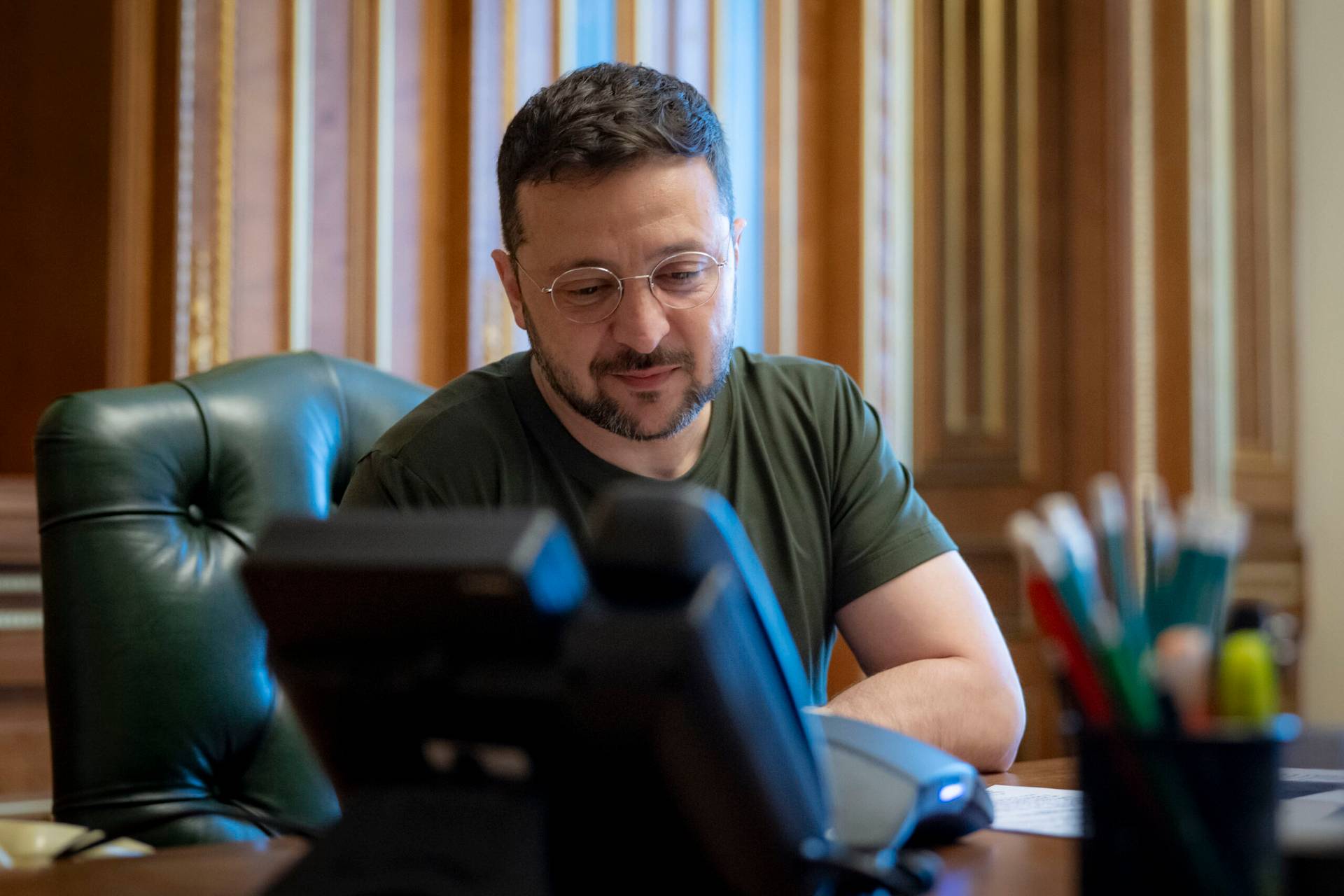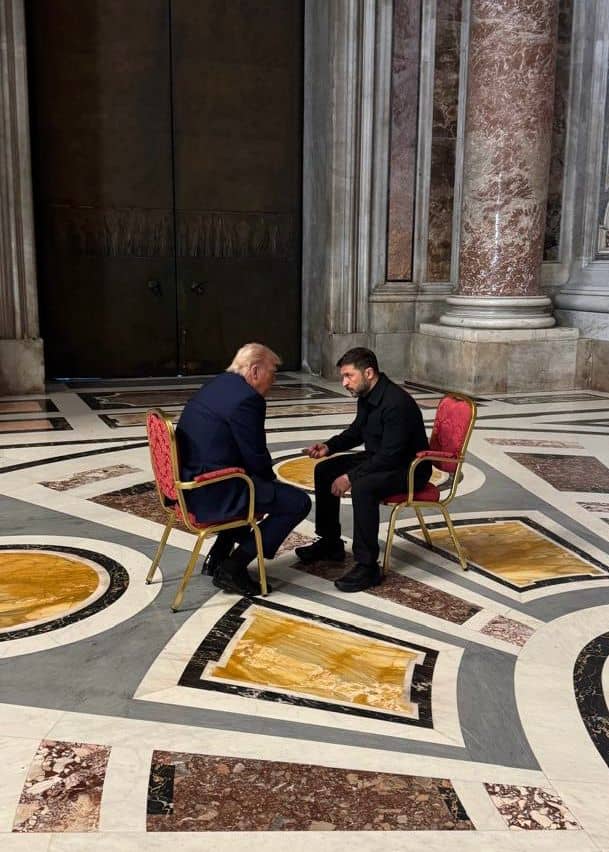ŠAŠTIN, Slovakia — Pope Francis’s first European tour in the COVID-19 era ended with a bang, as he celebrated Mass for 60,000 people in the field surrounding the national Basilica of Our Lady of the Seven Sorrows.
During the homily of the closing Mass of his Sept. 12-15 visit to Slovakia, Francis said that Christians are called to be “protectors and guardians of life where the culture of death reigns.”
According to local tradition, the image of Our Lady of the Seven Sorrows was carved by Countess Angelika Bakičová in 1564 to fulfill a promise made to save her marriage. The Virgin allegedly appeared to her and told her that everything would be fine.
The pope said that the Mother of God is a model of a faith that is inspired “by simple and sincere devotion, a constant pilgrimage to seek the Lord.”
“In making this journey, you overcome the temptation to a passive faith, content with this or that ritual or ancient tradition,” Francis said. “Instead, you leave yourselves behind and set out, carrying in your backpacks the joys and sorrows of this life, and thus make your life a pilgrimage of love towards God and your brothers and sisters.”
Departing from his prepared remarks, he said “when the Church stops, it becomes ill. When the bishops stop [journeying] they make the Church ill. And when the priests stop, they make the faithful ill.”
The pontiff also said that the faith cannot be “reduced to a sweetener to make life more palatable.”
“Jesus is a sign of contradiction. He came to bring light to the darkness, exposing the darkness for what it is and forcing it to submit to him. For this reason, the darkness always fights against him,” Francis said.

In 1995, when Pope John Paul II said Mass in the same field during his apostolic visit to Slovakia, there were 200,000 people in attendance, the difference in numbers explained both by the growing secularization of the Slovak people and the COVID-19 pandemic.
Slovakia has one of the lowest vaccination rates of the European Union, with less than 50 percent of the adult population receiving at least one dose of the COVID-19 vaccine.
The government had originally mandated that only those who had been fully vaccinated or could prove they had recovered from COVID-19 in the last six months would be allowed to attend the Mass. However, when a lower-than-anticipated number of registered people, they removed the restrictions.
Upon arrival, Francis took his time doing the usual drive through on the popemobile, imparting blessings, kissing babies and smiling, looking nothing like the man who came out of the balcony in the Gemelli hospital in Rome on July 10, a week after having 13 inches of his colon removed.
During his homily, Francis reminded the Slovak people, who for decades saw their faith oppressed by the communist regime, that Christians are “weavers of dialogue where hostility is growing; models of fraternal life where society is experiencing tension and hostility; bringers of the sweet fragrance of hospitality and solidarity where personal and collective selfishness too often prevails, protectors and guardians of life where the culture of death reigns.”
Among the participants at the liturgy was Katharina Vida, who provided the sign language interpretation for the service.
Asked by Crux what she felt about being the interpreter for a papal Mass, she couldn’t hide her emotion, and tearing up, gave the Slovak word for “incredible.” Next to her was Norberth, her son, who became an improvised interpreter, since Katharina doesn’t speak English.
She described the visit as “historic” because it helped remind the world that there is a country in the map called Slovakia.
This was not the first time she provided the sign language interpretation so the deaf people of Slovakia could follow a historic event.
“Back in 1989, when I was just a young girl, I was the interpreter of the revolution,” speaking about the civil uprising that led to the fall of communism in the then-Czechoslovakia.
“I have chills just thinking about it, even if at the time, I couldn’t grasp the meaning of what I was doing, or of what my hands were saying,” she said.
Follow Inés San Martín on Twitter: @inesanma


















